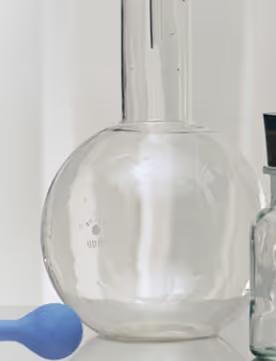Because your body’s immune system is responsible for protecting you from harm, when it detects something that shouldn’t be there — for example, pathogenic bacteria or viruses — an immune response is initiated. Protective mechanisms are recruited to localize and remove the threat from the body. In the case of bacteria or viruses, the immune response is a healing process. (Source)
However, there are conditions in which the immune system goes into overdrive and targets healthy cells with these otherwise protective measures. These conditions are referred to as autoimmune diseases. While nutrition and lifestyle factors alone don’t reverse autoimmune diseases, they can be powerful tools in lowering inflammation and reducing symptoms. Read on to learn more about the AIP diet and the nine foods to avoid with autoimmune diseases. (Source)
What Is the Autoimmune Protocol (AIP) Diet?
The AIP diet was developed for patients with autoimmune conditions to help determine if certain types of food were increasing their body's inflammation levels. The AIP dietary approach to autoimmune symptom reduction is by healing the gut and replenishing nutrient stores to nourish the immune system. Interestingly, healing the gut has been shown to reduce autoimmune-related inflammation. (Source)
The first phase of the AIP diet is the elimination phase, in which specific types of foods known to cause sensitivities and intolerances are removed from the diet. At the same time, nutrient-dense foods that support healing are added in. As symptoms subside, the reintroduction phase begins. Here, foods are slowly reintroduced while carefully monitoring for reactions. Inflammatory bowel disease, lupus, and rheumatoid arthritis are examples of autoimmune diseases for which the AIP diet may be recommended. (Source)
Foods to Avoid on the Autoimmune Protocol
The foods eliminated during the first phase of the AIP diet were selected for a few reasons — they are either pro-inflammatory, are common allergens, or contain compounds that either impair the gut lining or increase the diversity of bad gut bacteria. The elimination phase is temporary, and typically lasts between 30 and 90 days. The length of the elimination phase is tailored to each person, depending on their specific symptoms and condition severity. (Source)
Here are the nine foods to avoid on the AIP diet, with an explanation and a recommendation of alternatives.

Legumes
Legumes contain the plant compound lectin. Lectins can potentially impair the gut lining by increasing intestinal permeability — meaning substances, including those that are harmful like bacteria, can pass more freely out of the gut. Due to their impact on the gut microbiome, which plays an important role in inflammation, legumes like beans, lentils, and peas should be avoided when following the AIP diet. (Source)
Grains
Avoid grains like rice, wheat, barley, and bulgur for the same reasons that legumes are to be avoided on the AIP diet. Grains also contain the plant compound lectin, which can impair the gut lining and the gut flora, putting it into a pro-inflammatory state. (Source)
Nightshade Vegetables
Nightshade vegetables, like legumes, are also rich in lectins that can exacerbate leaky gut symptoms by increasing intestinal permeability. This is problematic because it increases the risk of bacteria and toxins making their way out of the gut. Examples of nightshade vegetables include eggplant, tomatoes, peppers, and tomatoes. (Source)
Eggs and Dairy
Eggs and dairy contain dietary cholesterol and saturated fats. Consuming foods rich in both cholesterol and saturated fat are associated with increased inflammation levels in the body. In addition, cow’s milk and eggs are among the top eight most common allergens, making them foods to avoid on the AIP diet. (Source, Source)
Red Meats: Higher in Saturated Fats
Certain red meats, specifically those higher in saturated fat, are associated with increased inflammation levels. Saturated fat intake is associated with increased pro-inflammatory cytokine production. Because cytokines are small proteins that control the activity of immune cells, this means that saturated fat can increase inflammation levels. And, higher amounts of total meat intake are associated with increased inflammation levels.
However, the AIP diet does not write off red meat altogether — the quality of the red meat matters. Meat from animals fed a diet of grass throughout their lifespan is higher in omega-3 fatty acids and lower in omega-6 fatty acids, a beneficial ratio for inflammation levels. This is because grass diets are higher in phytonutrients than grain diets, resulting in meat that is high in beneficial fatty acids and antioxidants. Selecting the right red meats and organ meats can help restore vital nutrients. (Source, Source)
Added Sugars, Refined Sugars, Non-Nutritive Sweeteners, and Sugar Alcohols
When sugars are refined, they lose their fiber and other nutritional value. Without fiber to slow them down, refined sugars enter the bloodstream more quickly, leading to blood glucose spikes. Over time, frequent blood sugar spikes are associated with higher inflammation levels. Conversely, fiber, a nutrient lost during processing, helps to slow the absorption of foods into the bloodstream, reducing blood sugar spikes. This helps keep you fuller for longer, and is also associated with reduced inflammation levels. Therefore refined sugars, including both white and brown sugar, should be avoided in the AIP diet. (Read our comprehensive review of two commonly used artificial sweeteners.) (Source)

Nuts and Seeds
Nuts and seeds are among the top most common food allergens. Because nuts and seeds have a symptomatic allergy-producing effect on a sizable portion of the population, it’s recommended that all nuts and seeds be avoided during the elimination phase of the AIP diet. Spices that derive from seeds, like mustard, nutmeg, and pepper, should also be avoided during this phase of the AIP diet. (Source, Source)
Refined Oils and Seed Oils
Similar to nuts and seeds, seed oils such as canola, sunflower, and soybean should also be avoided in the AIP diet to reduce inflammatory exposures.. And similar to refined sugars, highly refined oils such as canola oil should be removed during the elimination phase of the AIP diet, and potentially beyond due to its inflammatory properties . (Source, Source)

.avif)
%20(1).avif)
%20(1).avif)

.avif)








.avif)
.avif)




.avif)

%2520(1).avif)


